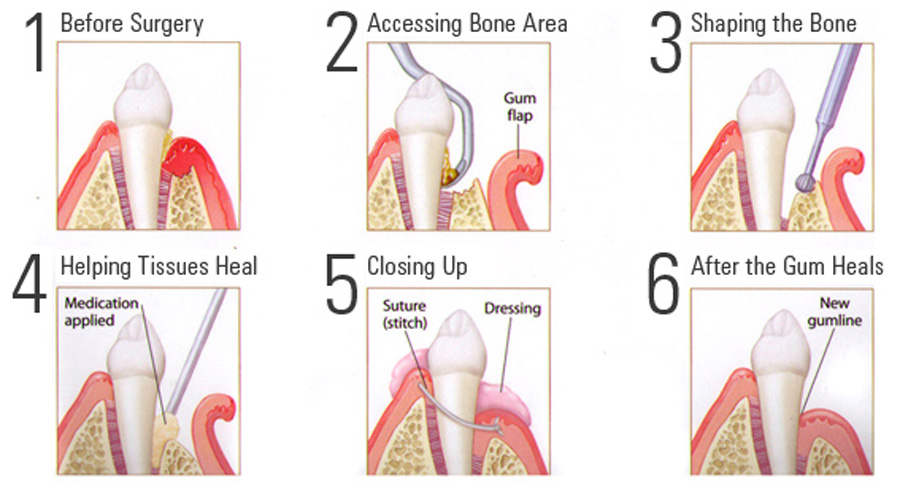Some cases of acute periodontal (gum) disease that do not respond to more conventional treatment and self-care such as flossing may require a special kind of cleaning called as scaling and root planing.
Procedure Involved-
The procedure begins with administration of a local anaesthetic to reduce any discomfort. Then, a small instrument called a “scaler,” or an ultrasonic cleaner, is used to clean beneath your gum line to remove plaque and tartar.The root surfaces on the tooth are then planed and smoothened. Scaling and root planing helps the gums reattach themselves to the tooth structure. Additional measures may be needed if the periodontal pockets persist after scaling and root planing.
What are Pockets?
Your bone and gum tissue should fit snugly around your teeth like a turtleneck. When you have periodontal disease, this supporting tissue and bone is destroyed, forming “pockets” around the teeth. Over time, these pockets become deeper, providing a larger space for bacteria to thrive and create havoc.As bacteria accumulate and advance under the gum tissue in these deep pockets, additional bone and tissue loss follows. Eventually, if too much bone is lost, the teeth will need to be extracted.
What is the treatment for Pockets?
Flap surgery is sometimes performed to remove tartar deposits in deep pockets or to reduce the periodontal pocket and make it easier for you or your dental professional to keep the area clean. This common surgery involves lifting back the gums and removing the tartar. The gums are then sutured back in place so that the tissue fits snugly around the tooth again.A pocket reduction procedure is recommended if daily at-home oral hygiene and a professional care routine cannot effectively reach these deep pockets.

